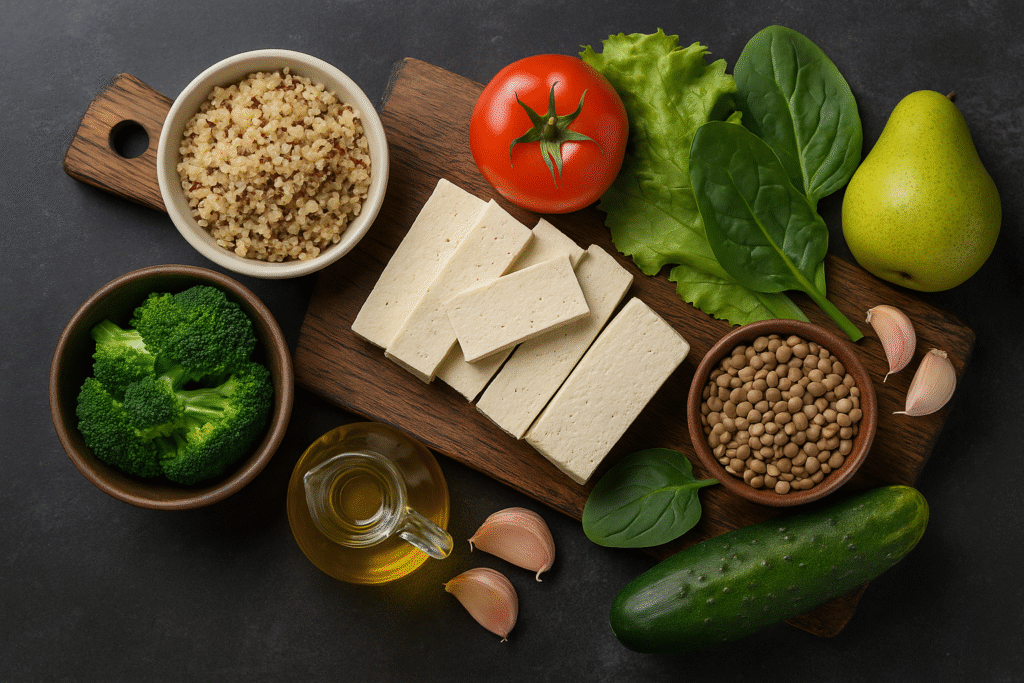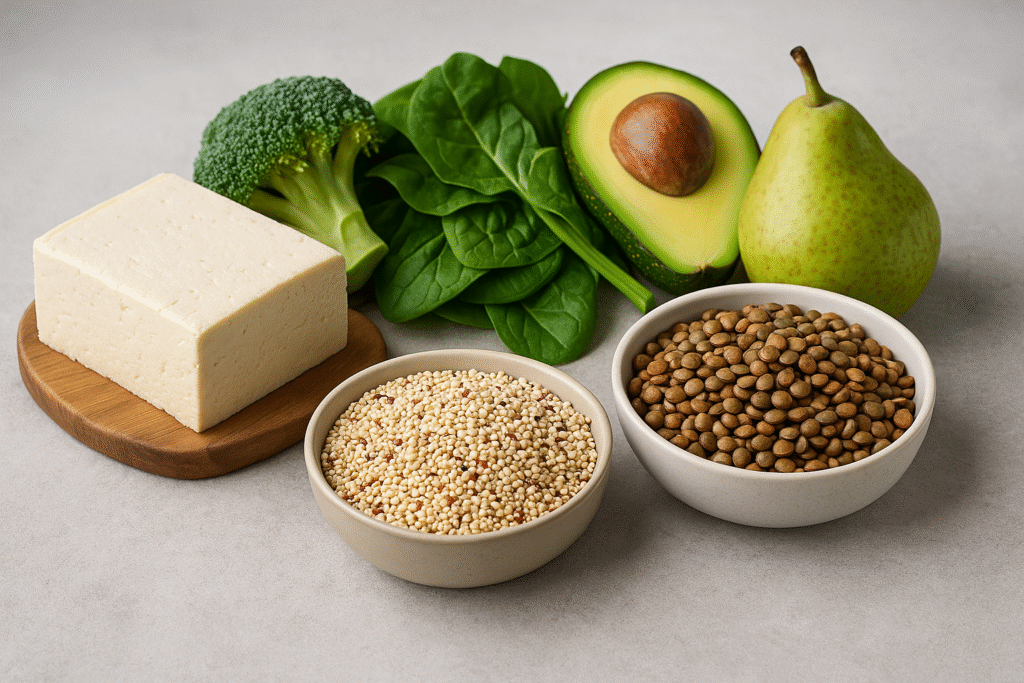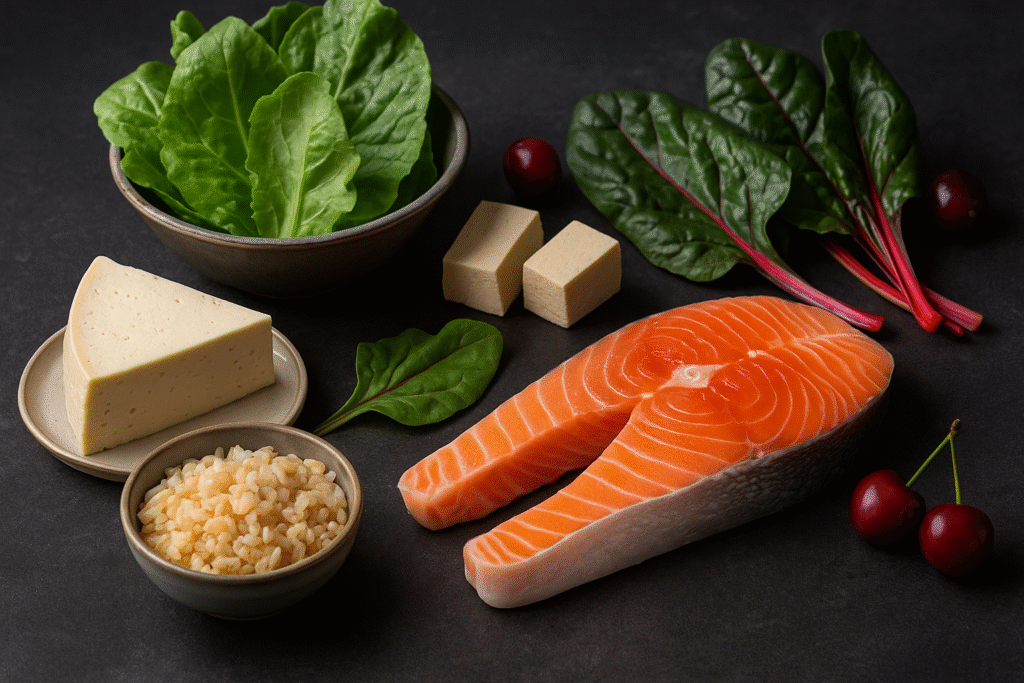Ever wondered why some diets work wonders for your friends but not for you? According to the Blood Type Diet, your body’s nutritional needs may be written in your blood. Developed by Dr. Peter D’Adamo, this controversial yet popular theory claims that people with different blood types (O, A, B, and AB) digest foods differently, respond uniquely to stress, and even require specific types of exercise.
In this article, we dive deep into the science, history, and practical applications of the Blood Type Diet. You’ll discover what foods are recommended—or restricted—based on your blood type, and whether these guidelines can truly lead to better digestion, weight loss, and overall wellness. Whether you’re skeptical or curious, this guide will equip you with everything you need to decide if eating for your type really makes sense.
Understanding the Blood Type Diet: Origins and Claims
The Blood Type Diet was popularized in 1996 by Dr. Peter D’Adamo in his bestselling book Eat Right 4 Your Type. His premise was straightforward but revolutionary: your blood type determines how your body reacts to different foods, influences your gut microbiome, and even dictates your optimal lifestyle choices. Though polarizing in the scientific community, the diet continues to enjoy a strong following, especially among those seeking alternative nutrition strategies.
📌 Did You Know?
According to Harvard Health, nearly 30 million copies of Eat Right 4 Your Type have been sold worldwide—a testament to the public’s enduring interest in customized nutrition.
The Science Behind the Blood Type Hypothesis
At the heart of the Blood Type Diet is the idea that lectins, which are proteins found in certain foods, react differently with the antigens present in different blood types. For example, people with type O blood are said to produce stronger stomach acid, making them better suited for digesting meat. Meanwhile, those with blood type A are thought to thrive on plant-based diets due to their “agrarian” lineage.
D’Adamo proposed that misalignment between diet and blood type could lead to inflammation, poor digestion, and disease over time. Though these ideas lack broad scientific consensus, some clinical observations suggest varying metabolic responses among blood types.
Core Principles of the Blood Type Diet
Each blood type is associated with distinct nutritional recommendations. These are not just dietary changes, but comprehensive lifestyle adjustments:
- Type O: High-protein, meat-rich, low-dairy, vigorous exercise
- Type A: Plant-based, low-fat, calming activities like yoga
- Type B: Balanced omnivorous diet, moderate exercise
- Type AB: Mixed traits, cautious with red meat and caffeine
These distinctions go beyond macronutrient balance. The Blood Type Diet also suggests that certain foods act as “toxins” depending on your blood type, leading to bloating, fatigue, or immune issues.
Why People Still Follow the Blood Type Diet
Despite limited peer-reviewed evidence, millions report anecdotal success with the Blood Type Diet. Testimonials often cite improved digestion, more energy, and easier weight management. One reason may be psychological: by restricting processed foods and increasing mindfulness about eating, people experience benefits unrelated to their actual blood type.
Still, the diet remains controversial in academic circles. A 2014 study published in PLOS One found no direct support for the Blood Type Diet’s effectiveness in metabolic health—but it did acknowledge that participants eating according to the plan often improved their health regardless.
Type O Diet Plan: High-Protein Approach and Ancestral Roots
The Blood Type Diet identifies Type O as the “hunter” blood type—evolutionarily the oldest and most genetically predisposed to a high-protein, meat-based diet. Dr. D’Adamo argues that individuals with blood type O tend to have higher levels of stomach acid, making them efficient at digesting animal protein but more prone to inflammation when consuming dairy and grains.

Nutritional Guidelines for Type O
According to the diet for blood type O, the nutritional template prioritizes lean animal proteins, vegetables, and specific fruits while eliminating most grains, dairy, and legumes. Gluten and lectin-rich foods are especially discouraged, as they may interfere with digestion or cause immune reactions in this blood type.
💡 Quick Tip
For Type O individuals, focus on grass-fed meats, avoid wheat, and embrace broccoli, kale, and berries. These support metabolic function and reduce inflammation.
Best and Worst Foods for Blood Type O
Blood Type O Food Guidelines
| Food Group | Recommended | Avoid |
|---|---|---|
| Proteins | Grass-fed beef, lamb, turkey, cod | Bacon, pork, processed meats |
| Vegetables | Kale, spinach, broccoli, artichoke | Cauliflower, cabbage, Brussels sprouts |
| Fruits | Berries, figs, plums, bananas | Oranges, melons, strawberries |
| Grains | Limited: sprouted grains, rice | Wheat, corn, oats |
| Dairy | Ghee (occasionally) | Milk, cheese, yogurt |
| Legumes | Black-eyed peas (rare) | Lentils, kidney beans, navy beans |
Exercise and Lifestyle Tips for Type O
Type O individuals are believed to thrive on high-intensity physical activity such as weight training, running, or martial arts. This is said to align with their ancestral hunter physiology and helps regulate stress hormones like cortisol, which can be elevated in this group.
✅ Expert Summary
Type O diets work best when paired with intense workouts, adequate rest, and limited exposure to inflammatory foods like gluten and dairy.
Type A Diet Plan: Plant-Based Power and Immune Health
The Blood Type Diet defines Type A as the “cultivator”—a blood group that evolved with the rise of agriculture. According to Dr. D’Adamo, individuals with blood type A benefit most from a vegetarian or semi-vegetarian diet. Their immune systems are described as sensitive but highly adaptive, and their digestive systems as more fragile compared to Type O.

Why Type A Needs a Plant-Focused Diet
Unlike Type O, people with blood type A are believed to produce lower levels of stomach acid, making it harder to break down heavy animal proteins. This is why plant-based foods, fermented soy products, and specific grains are central to the blood type A diet plan. The aim is to enhance immune function, support cellular repair, and reduce the likelihood of cardiovascular disease.
Quick Tip
For blood type A, fermented foods like tempeh and miso can improve gut health and immunity. Avoid dairy and red meat to reduce inflammation.
Best and Worst Foods for Blood Type A
Blood Type A Food Guidelines
| Food Group | Recommended | Avoid |
|---|---|---|
| Proteins | Tofu, tempeh, lentils, almonds | Beef, pork, shellfish |
| Vegetables | Broccoli, spinach, carrots, garlic | Peppers, eggplant, tomatoes |
| Fruits | Berries, pineapple, apples | Oranges, bananas, mangoes |
| Grains | Oats, spelt, quinoa, amaranth | Wheat (refined), white flour |
| Dairy | Rice milk, goat cheese (minimal) | Cow’s milk, ice cream, blue cheese |
| Legumes | Black beans, lentils, mung beans | Kidney beans, navy beans |
Lifestyle Considerations for Type A
D’Adamo emphasizes that individuals with type A blood should also manage stress differently. Calming activities like yoga, tai chi, or deep breathing are strongly encouraged to regulate cortisol levels and support immune function.
✅ Expert Summary
Type A dieters benefit most from a vegetarian-based meal plan rich in antioxidants and stress-reducing routines that promote long-term immune balance.
Type B Diet Plan: Balanced Omnivore with Unique Tolerances
Often described as “the nomad,” blood type B is said to have the most flexible and adaptive digestive system among the blood groups. According to the Blood Type Diet, this group evolved from ancient herding populations and retains the unique ability to process a wide range of animal and plant-based foods. Dr. D’Adamo asserts that people with type B blood possess a strong immune profile and can tolerate dairy better than other types.

Digestive Flexibility and Dietary Strategy
What sets the blood type B diet apart is its balance. Unlike Type O or A, Type B individuals are encouraged to eat a diverse mix of proteins, grains, vegetables, and dairy, with specific caution around lectin-rich foods. This plan promotes equilibrium between muscle-building foods and immune-supporting plant options.
📌 Did You Know?
Type B individuals are the only group in the Blood Type Diet advised to regularly consume dairy products like yogurt and cottage cheese—due to higher tolerance to dairy lactose.
Best and Worst Foods for Blood Type B
Blood Type B Food Guidelines
| Food Group | Recommended | Avoid |
|---|---|---|
| Proteins | Lamb, turkey, eggs, freshwater fish | Chicken, duck, shellfish |
| Vegetables | Leafy greens, beets, yams, mushrooms | Tomatoes, corn, olives |
| Fruits | Grapes, bananas, plums, pineapple | Pomegranates, coconuts |
| Grains | Oats, millet, rice | Buckwheat, rye, corn |
| Dairy | Yogurt, kefir, cottage cheese | Ice cream, blue cheese |
| Legumes | Green beans, lentils | Peanuts, sesame seeds |
Physical and Mental Wellness for Type B
In addition to nutritional balance, Type B dieters are encouraged to engage in moderate exercise—such as swimming, hiking, or tennis—which supports stress resilience and cardiovascular health. These activities harmonize with the B-type’s internal balance and support cognitive clarity.
✅ Expert Summary
Type B individuals benefit from a diversified omnivore diet, including specific dairy products and a mindful balance of grains and proteins—supported by moderate physical routines.
Type AB Diet Plan: The Modern Blend of A and B Traits
Blood type AB is the youngest and rarest blood group, found in less than 5% of the global population. Within the Blood Type Diet, AB is described as a “modern enigma” because it combines both the benefits and challenges of types A and B. People with this blood type are believed to exhibit dual digestive tendencies, requiring a more cautious and selective diet.

H3: Hybrid Traits and Nutritional Balance
The AB blood type diet requires balance and restraint. ABs have low stomach acid like Type A but also benefit from Type B’s immune flexibility. This creates a paradox: they can tolerate dairy (like B), but only in moderation, and should avoid red meat (like A). AB individuals often fare better with small, frequent meals, focusing on fresh, alkaline-forming foods.
💡 Quick Tip
AB individuals should combine the vegetarian principles of Type A with the moderate dairy tolerance of Type B—while avoiding processed meats and caffeine.
Best and Worst Foods for Blood Type AB
Blood Type AB Food Guidelines
Caption: Ideal foods for AB blood type to support digestive and cardiovascular balance
SEO Alt Text: Chart showing foods suitable for AB blood type combining traits from A and B
| Food Group | Recommended | Avoid |
|---|---|---|
| Proteins | Turkey, tofu, eggs, cod, sardines | Beef, pork, smoked meats |
| Vegetables | Cucumbers, kale, celery, yams | Corn, peppers, radishes |
| Fruits | Cherries, grapes, watermelon | Oranges, bananas |
| Grains | Oats, rye, millet | Buckwheat, corn |
| Dairy | Yogurt, goat milk, mozzarella (moderate) | Whole milk, processed cheeses |
| Legumes | Lentils, mung beans | Kidney beans, lima beans |
Stress, Immunity, and AB Lifestyle
AB types are often considered emotionally sensitive and hormonally complex, with a tendency toward stress and immune disorders. Practices like meditation, tai chi, and restorative yoga are especially beneficial. Moreover, ABs should avoid stimulants such as caffeine and alcohol to maintain adrenal balance.
✅ Expert Summary
The AB diet demands a careful fusion of Type A’s plant focus with Type B’s moderation. Lifestyle choices must support hormonal and immune harmony to prevent fatigue and inflammation.
What the Research Says: Is the Blood Type Diet Scientifically Valid?
The Blood Type Diet has generated considerable debate in the medical and nutritional science communities. While anecdotal support remains strong, large-scale scientific validation remains limited—and in some cases, directly contested.
The Origins of Scientific Scrutiny
Shortly after Dr. Peter D’Adamo published Eat Right 4 Your Type, researchers began questioning its foundational assumptions. One major point of critique involves the lack of robust clinical trials demonstrating a causal relationship between blood type-specific diets and improved health outcomes.
A 2013 review in the American Journal of Clinical Nutrition found no evidence supporting the diet’s key premise—that different blood types benefit uniquely from tailored diets. The researchers concluded that “there is currently no direct evidence supporting the health benefits of blood type diets.”
American Journal of Clinical Nutrition – Systematic Review
Contrasting Studies: Some Signs of Indirect Benefit
Interestingly, a 2014 study published in PLOS One found that while blood type did not alter outcomes, participants adhering to certain Blood Type Diet patterns still experienced improvements in cardiometabolic health markers—such as blood pressure and cholesterol.
This suggests that the benefits may stem more from whole-food dietary changes than blood type alignment itself. In other words, cutting processed foods and increasing plant-based intake will likely benefit most individuals, regardless of blood type.
PLOS One – Blood Type Diet Outcomes Study
Expert Opinions and Institutional Positions
- Cleveland Clinic states there is no credible scientific evidence to validate the Blood Type Diet’s health claims, urging patients to consult with nutritionists before adopting restrictive regimens.
- Harvard Health Publishing echoes this view, labeling the diet “an elegant hypothesis that has failed to deliver on its promises” and warning that it may distract from more evidence-based nutrition.
- The National Institutes of Health (NIH) do not officially endorse the Blood Type Diet, instead recommending dietary frameworks like the Mediterranean or DASH diets, which are grounded in decades of clinical evidence.
Cleveland Clinic Overview
Harvard Health Analysis
NIH Dietary Guidelines
📌 Did You Know?
While scientific backing is limited, millions still report improvements from following the Blood Type Diet—suggesting a strong placebo effect or benefit from general dietary awareness.
Conclusion
The Blood Type Diet continues to spark both enthusiasm and skepticism. While science has yet to confirm its physiological mechanisms, many people report real-world improvements in digestion, energy, and immune function when eating for their type. Whether this is due to personalized nutrition or simply a shift toward whole, less processed foods, the takeaway is clear: awareness of your unique body can enhance your dietary choices.
If you’re exploring new ways to align your diet with your body’s natural needs, experimenting with the Blood Type Diet—under medical guidance—might offer valuable insights. The most important element? Stay informed, listen to your body, and commit to long-term consistency.
📌 Main Takeaways
- The Blood Type Diet categorizes foods based on blood group compatibility (O, A, B, AB)
- Type O thrives on a high-protein, grain-free diet with vigorous exercise
- Type A benefits from a plant-based plan with calming lifestyle habits
- Type B allows for balanced nutrition, including dairy and moderate meat
- Type AB blends traits from A and B, favoring moderation and low-acid foods
- Scientific evidence is limited, but some clinical benefits exist indirectly
- Always consult a professional before committing to restrictive dietary frameworks
🔗 Further Reading
Ready to deepen your nutrition strategy beyond blood types? Explore more expert content below:
- Supercharge your digestion with fiber-smart strategies: FibreMaxxing: High-Fiber Diet 2025
Unlock better gut health, reduced cravings, and optimal nutrient absorption. - Learn the essential vitamins and minerals for peak wellness: Micronutrients Guide
Explore how micronutrient balance supports metabolism, immunity, and longevity. - Support liver function and fat metabolism naturally: HepatoBurn Review
Discover if this botanical liver formula can enhance your detox and energy systems.
FAQ – Frequently Asked Questions
What is the Blood Type Diet and how does it work?
The Blood Type Diet suggests that people should eat according to their blood type—O, A, B, or AB. Each group is believed to process foods differently, affecting digestion and immunity. Though popular, this theory lacks strong scientific validation.
Is the Blood Type Diet effective for weight loss?
Some individuals report weight loss due to cleaner eating habits promoted by the diet. However, there’s no clinical evidence linking blood type matching directly to fat loss results.
Can I follow the Blood Type Diet if I’m vegetarian or vegan?
Yes. Type A and AB diets are more plant-focused, making vegetarianism compatible. For Types O and B, modifications may be needed since those diets emphasize animal proteins.
What foods should Type O avoid?
Type O individuals are advised to avoid wheat, corn, dairy, and legumes. These foods are believed to interfere with digestion and energy in this group.
Why is dairy allowed for blood type B but not O or A?
Blood type B is thought to have better lactose tolerance. In contrast, Types O and A may struggle with digesting dairy, leading to potential inflammation or fatigue.
Is the Blood Type Diet safe for everyone?
While the diet promotes unprocessed foods, its restrictions may not suit all health profiles. It’s best to consult a healthcare provider before starting any restrictive plan.














